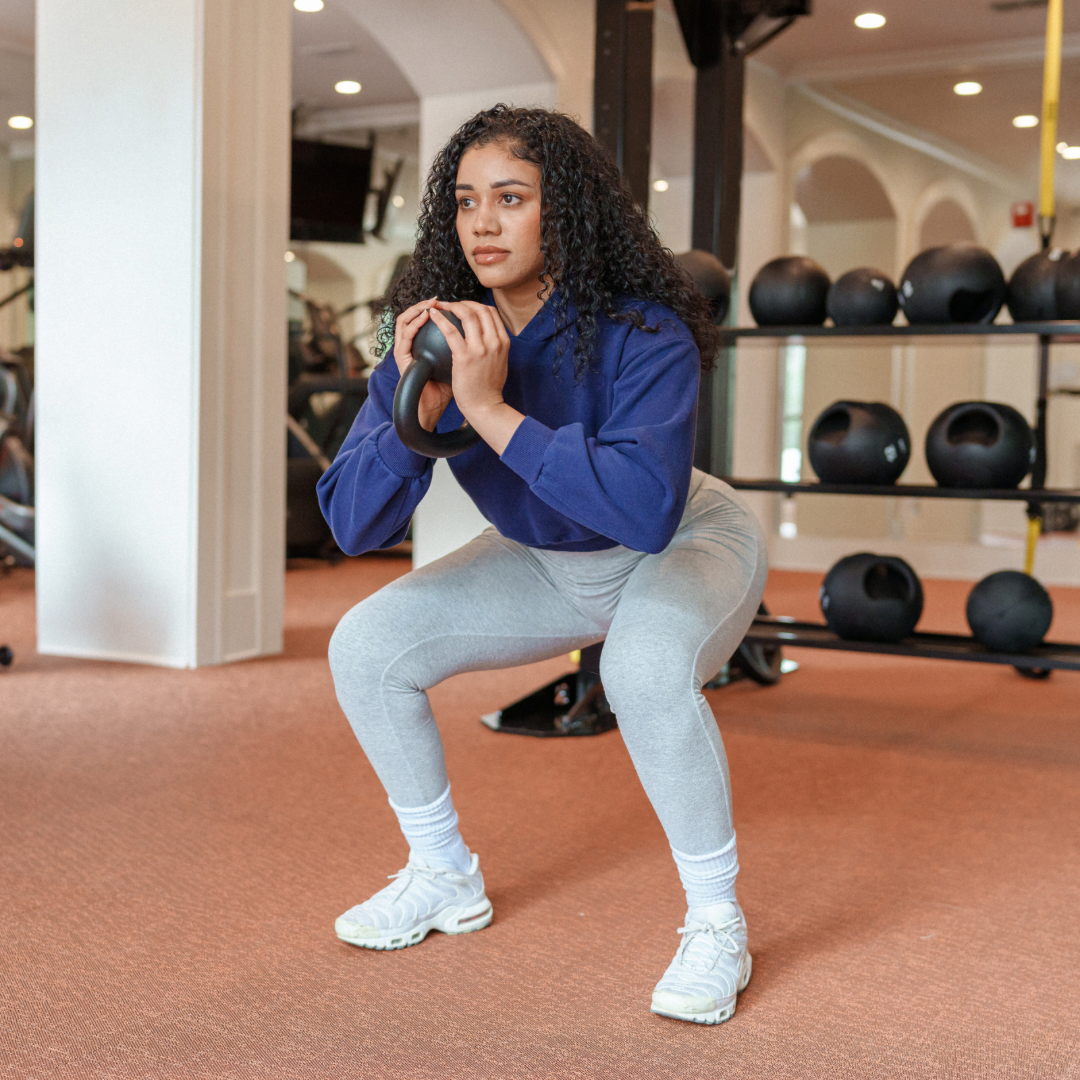4 of The Best Exercise Methods for Fat Loss & Stress Relief
Effective exercises for fat loss combine high-intensity and strength training, as these can boost metabolism and promote calorie burning.
As we age the way our body stores fat changes and for women in particular as we move towards our perimenopausal years (from 35 onwards) our bodies are more susceptible to gradual weight increases which can be difficult to manage as we age if don’t take action early on. Increasing muscle mass and keeping our body fat low will help to keep our bodies healthy as we age. Here we look at some of the best exercises which not only aid fat loss but also have the added benefit of relieving stress as high cortisol levels can also be linked to the body storing fat, particularly across the middle section of our body.
Effective exercises for fat loss combine high-intensity and strength training, as these can boost metabolism and promote calorie burning. Activities like interval training, which alternates between short bursts of intense effort and recovery, are particularly beneficial for shedding fat. Incorporating compound movements such as squats, deadlifts, and push-ups helps build muscle mass, further enhancing overall calorie expenditure. Cardiovascular exercises, including running, cycling, and swimming, also play a crucial role in fat loss by increasing heart rate and endurance. To maximize results, it's essential to combine these exercises with a balanced diet and adequate rest.
Below we look in more detail at some of the most effective methods.
The benefits of yoga extend far beyond mere physical activity; it promotes a state of mindfulness, which can be incredibly helpful in managing stress and curbing emotional eating habits that often hinder weight loss efforts.
Yoga
Yoga can indeed be an effective and valuable tool for fat loss, although it may not lead to visible results as quickly as some high-intensity workouts that often dominate fitness trends. The benefits of yoga extend far beyond mere physical activity; it promotes a state of mindfulness, which can be incredibly helpful in managing stress and curbing emotional eating habits that often hinder weight loss efforts. Different styles of yoga provide varying levels of intensity, catering to diverse preferences and fitness levels. For instance, Vinyasa or power yoga typically elevates the heart rate more significantly, leading to a greater calorie burn compared to more gentle practices. Hatha and restorative yoga, while less intense, can still effectively contribute to muscle toning, balance, and improved flexibility over time. Additionally, yoga fosters a deeper awareness of body movements and encourages healthier lifestyle choices, which can be crucial components in a comprehensive fat-loss journey. Incorporating yoga alongside a balanced diet and various other forms of exercise can greatly enhance overall results. In conclusion, while yoga alone may not be the fastest route to achieving fat loss, it’s holistic benefits play a significant role in contributing positively to a sustainable and healthy weight management strategy.
HIIT Training
High-Intensity Interval Training (HIIT) is widely recognized as one of the most effective forms of exercise for fat loss. This training method involves short bursts of intense activity followed by rest or lower-intensity periods. Here are some key points that highlight its effectiveness for fat loss:
HIIT can incorporate various exercises and adaptations, keeping workouts fresh and engaging.
HIIT can lead to a phenomenon known as Excess Post-Exercise Oxygen Consumption (EPOC), where the body continues to burn calories at an elevated rate after the workout has ended.
Increased Caloric Burn: HIIT workouts typically have a higher calorie burn compared to steady-state cardio. The intensity of the exercise elevates your heart rate, leading to increased energy expenditure during and after the workout.
Afterburn Effect: HIIT can lead to a phenomenon known as Excess Post-Exercise Oxygen Consumption (EPOC), where the body continues to burn calories at an elevated rate after the workout has ended. This can contribute to a greater overall caloric deficit.
Time Efficiency: HIIT workouts often last between 15 to 30 minutes, making them an efficient option for those with busy schedules. The short duration does not compromise the effectiveness in terms of fat loss.
Muscle Preservation: Engaging in HIIT can help preserve lean muscle mass while promoting fat loss. This is crucial since maintaining muscle can enhance metabolism, leading to a greater number of calories burned at rest.
Variety and Adaptability: HIIT can incorporate various exercises and adaptations, keeping workouts fresh and engaging. This variety can help improve adherence to a fitness routine, important for long-term success.
Accessibility: HIIT can be performed with little to no equipment, making it accessible to a broad audience. This flexibility allows individuals to tailor their workouts according to their preferences and fitness levels.
In summary, HIIT is a valuable form of exercise for those looking to achieve fat loss due to its calorie-burning potential, efficiency, and ability to maintain muscle mass. However, combining HIIT with a well-rounded fitness regimen, including strength training and a balanced diet, is essential for optimal results.
Strength Training
Weight training can be an effective component of a fat loss regimen. Unlike traditional cardio exercises, which primarily burn calories during the activity, weight training boosts metabolism through muscle growth and repair. Increased muscle mass elevates your resting metabolic rate, meaning you burn more calories even when at rest.
Weight training boosts metabolism through muscle growth and repair.
Higher muscle-to-fat ratio not only enhances overall body composition but also improves physical performance and strength.
Incorporating weight training into a workout routine helps reduce body fat while preserving lean muscle mass. This is crucial because a higher muscle-to-fat ratio not only enhances overall body composition but also improves physical performance and strength.
Additionally, weight training can contribute to better insulin sensitivity, which plays a role in fat metabolism. This type of exercise can also lead to higher afterburn effects, known as excess post-exercise oxygen consumption (EPOC), where the body continues to burn calories after the workout.
For optimal fat loss results, pairing weight training with a balanced diet and cardiovascular exercise is recommended. Overall, weight training is a powerful tool for those looking to lose fat and improve their overall fitness levels.
Boxing often involves intervals of intense activity followed by short recovery periods.
Boxing
Like HIIT training, boxing is an effective exercise for fat loss due to its high-intensity nature, engaging multiple muscle groups, and the cardiovascular benefits it provides. Here’s how boxing contributes to fat loss:
High-Calorie Burn: Boxing sessions can burn a significant number of calories depending on the intensity and duration. A typical hour-long boxing workout can lead to calorie expenditures ranging from 400 to 800 calories.
Interval Training: Boxing often involves intervals of intense activity followed by short recovery periods. This format boosts metabolism and promotes fat loss even after the workout is completed, known as the afterburn effect.
Muscle Engagement: Boxing builds lean muscle mass, particularly in the core, arms, and legs. Increased muscle mass elevates the basal metabolic rate (BMR), leading to increased calorie burn at rest.
Cardiovascular Health: The aerobic and anaerobic components of boxing enhance cardiovascular fitness. Improved heart health enables higher workout intensities, further contributing to fat loss.
Stress Relief: Engaging in boxing can reduce stress, which can help manage cortisol levels. High cortisol can contribute to weight gain, particularly around the abdomen.
Variety and Enjoyment: Boxing workouts are dynamic and varied, making it easier to stick with a fitness routine. Enjoying the workout increases adherence, which is crucial for long-term fat loss.
In summary, boxing is a comprehensive workout that not only aids in fat loss but also enhances overall fitness. Combining boxing with a balanced diet and a consistent exercise regime will yield the best results in your fat loss journey.
As we have noted in the previous sections two of the most helpful things to aid fat loss are consuming a balanced, healthy diet and making sure you give your body and mind adequate rest. By factoring these in to your daily life alongside your workouts your body will be fuelled well enough to work out efficiently whilst giving giving it appropriate rest time to build muscle and reduce fat, not to mention the added benefits of boosting your mood.
Consuming a healthy balanced diet will ensure your body will be fuelled well enough to work out efficiently
Making sure you give your body and mind adequate rest will lower your cortisol levels and allow your body to heal and build more lean muscle.

















